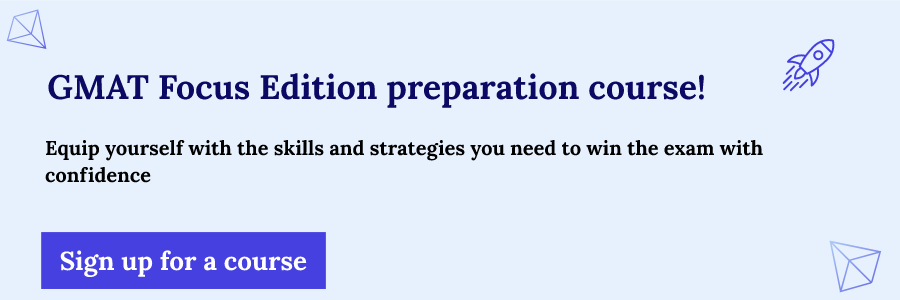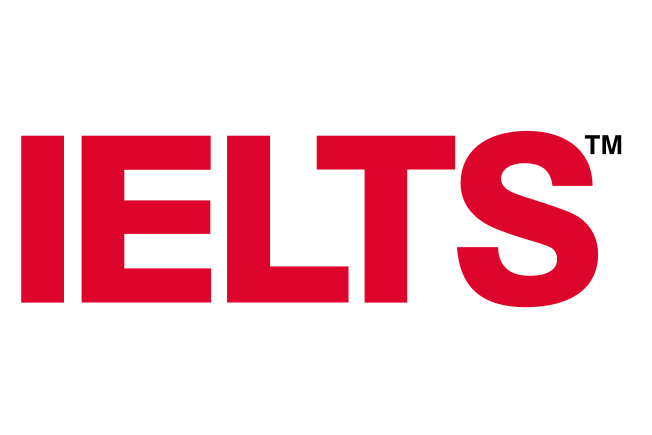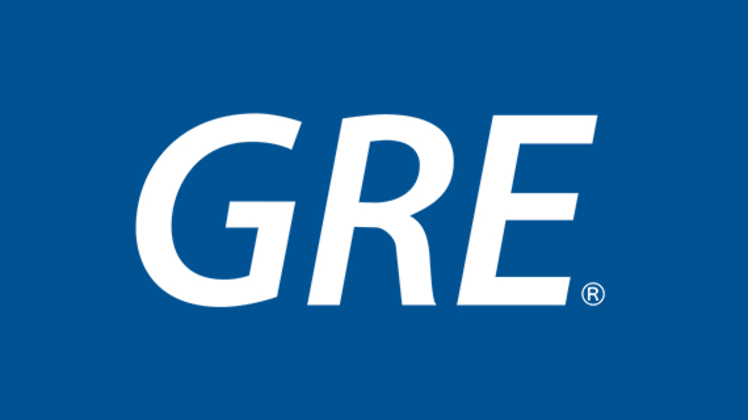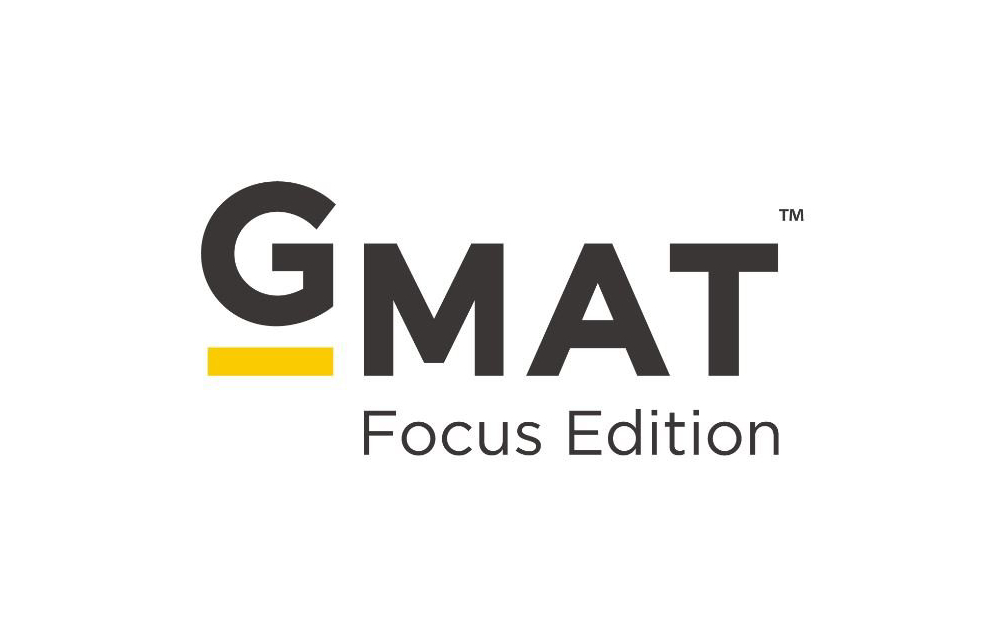
The Graduate Management Admission Test (GMAT) is a standardized computer-adaptive test that assesses the analytical, quantitative, verbal, and integrated reasoning skills of individuals seeking admission to graduate management programs, such as MBA (Master of Business Administration) or other related degrees. The GMAT is widely used by business schools and management programs worldwide as part of their admissions process to evaluate candidates’ abilities to solve problems, analyze data, and communicate effectively in a business and management context.
The exam is not only accepted in more than 7,700 programs at more than 2,400 institutions worldwide, but also has a very large impact on scholarship offers.
On February 1, 2024, the GMAT exam version was updated and replaced with a new version called GMAT Focus Edition. The GMAT Focus edition has undergone significant changes, including a reduction in the number of sections and a one-hour reduction in testing time. In addition, there are new features that allow users to review and edit their answers, choose the order of sections, and more. We’ll talk more about these improvements in this article.
Exam structure
The GMAT Focus Edition exam consists of three sections:
Quantitative Reasoning
One of the most important sections of the GMAT, assessing your basic knowledge of algebra and arithmetic, as well as the problem-solving skills needed to succeed in quantitative-based subjects such as finance, accounting, and managerial statistics. The section consists of 21 questions and requires logical and analytical thinking, with the caveat that you may not use a calculator during the assessment.
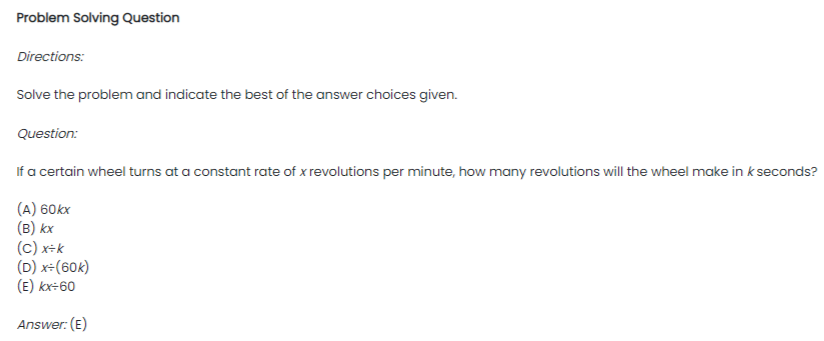
Verbal Reasoning
This section assesses your ability to read and comprehend written materials, as well as your ability to reason and evaluate arguments.
It tests specific reading skills such as understanding main idea, supporting ideas, inference, application, logical structure, and style.
The test consists of 23 questions based on short reading passages, usually not exceeding 100 words. A companion question asks you to determine which of five answer choices strengthens or weakens the argument, explains flaws in the arguments, strongly supports or destroys them. No specialized knowledge of the subject matter is required to answer these questions.
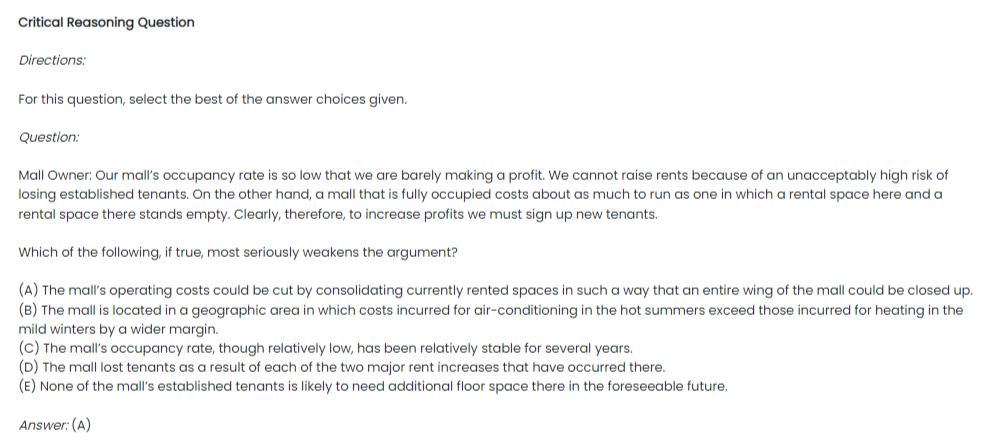
Data Insights
The section assesses candidates’ ability to analyze and interpret data in real-world business scenarios. A calculator may be used in this section. It consists of 20 questions divided into the following types:
- “Data Sufficiency”, assesses the ability to analyze a quantitative problem, recognize relevant data, and determine if there is enough information to solve the problem;
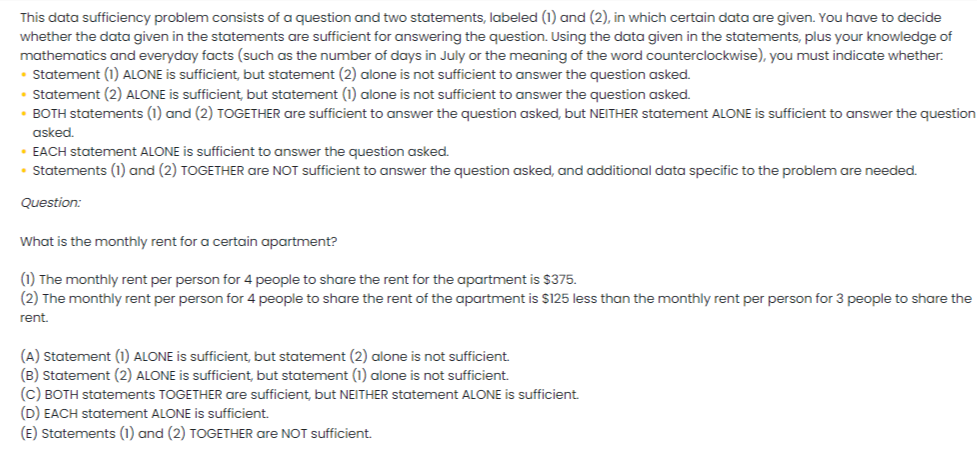
- “Multiple Source Reasoning” requires candidates to examine data from multiple sources by answering questions in a variety of formats such as multiple choice, yes/no, or true/false;

- “Analyzing Tables” involves sorting and analyzing data presented in a sortable table, determining the truth or falsity of given statements;
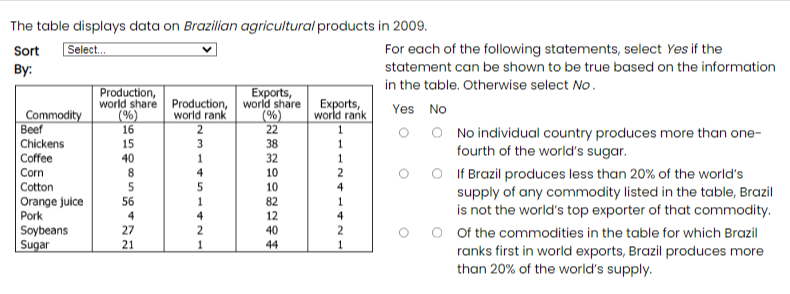
- “Graph Interpretation” evaluates the interpretation of information from charts or graphs, often involving filling in the blanks;
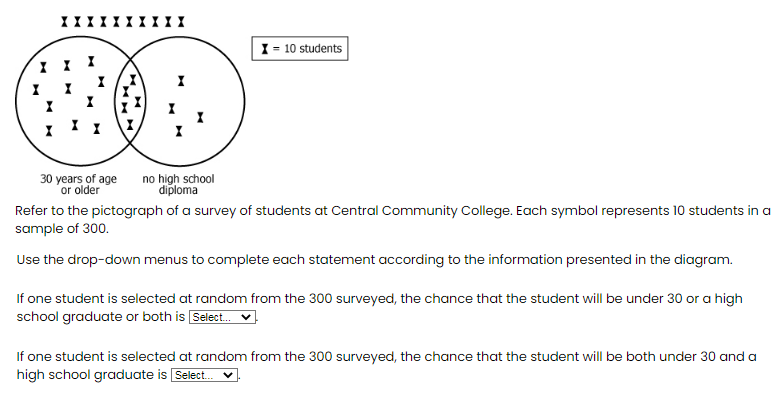
- “Two-Part Analysis” measures the ability to solve complex problems involving both quantitative and verbal components and requires evaluating trade-offs and identifying relationships between objects.
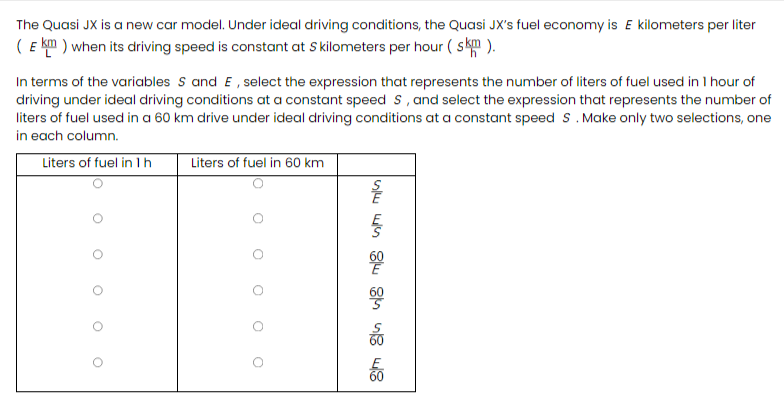
Whether you need help with math, science, languages, or any other subject, our tutors are ready to help you on your academic journey. Don’t miss your chance to succeed – take a discounted trial lesson today!
Testing process
GMAT Focus Edition is available throughout the year, with no fixed test dates. Whether you prefer the convenience of taking the GMAT online from home, 24 hours a day, seven days a week, or choose in-person testing at an approved Pearson VUE test center, the choice is yours. Testing centers are open seven days a week during designated hours.
Preparation is crucial, and it’s recommended to start three to six months in advance to achieve your desired score or allow for a retake.
You can register for the GMAT at mba.com. When registering, you can select your test center (if applicable), date and time of the exam, and make payment.
The exam is 2 hours and 15 minutes long, featuring 64 questions across three sections, each lasting 45 minutes. There’s an optional 10-minute break after the first or second section, but not both.
The test incorporates computer-adaptive testing, adjusting question difficulty based on your previous answers. Namely, when you answer a question correctly, a more difficult question appears, and when you answer it incorrectly, an easier question appears.
New features and test tools:
- Section order selection. You can take the exam in any section order you prefer, which ends up being six section order options.
- Viewing and editing questions. You can bookmark and review as many questions as you like, and you can change up to three answers per section during the remaining section time, allowing you to optimize your test-taking strategy.
- Flexible Results Sending. You can choose which schools you want to receive free score reports to after you take the exam, knowing exactly how you did on the exam.
When you take the exam at the testing center, the testing center staff will take a picture of you and ask for a palm vein scan, which will be used to confirm your identity each time you enter the testing room.
Upon registration, you will receive up to five erasable notepads and a notepad pen for use during the GMAT exam.
When testing at home, check the system requirements in advance and make sure your computer is suitable for the exam. Download and install a secure browser.
Check the microphone, speakers, and video. Disable VPN connections and automatic processes scheduled to run on your device. Make sure you have a stable wired Internet connection.
During testing, keep your eyes on the screen and keep unauthorized people out of the room.
Regardless of where you take the test, you should always have your ID card and an electronic or printed letter with the date and time of the test.
Requirements for taking the test
What you can bring with you to the test center:
- GMAT-approved ID card
- Confirmation of appointment you received via email from Pearson VUE
- Convenience items
- Locker key
- Light sweater
- Prescription eyeglasses
What you can keep in your locker at the testing center:
- Electronic devices
- Writing utensils
- Personal hygiene items
- Dictionaries
- Paper
- Notepads
- Translators
What not to bring into the testing center:
- Food and beverages unless prior authorization has been obtained
- Weapons in any form
The following items are prohibited for online testing at home:
- Tablets and mobile devices
- Headphones or headsets
- Watches
- Hats (or other headwear)
- Handbags
- Coats
- Books
- Boards with grid or other markings.
- Boards with background colors
- Paper
- Pencil pen
- Permanent marker
- Napkins, paper towels
- Paper on a transparent slide
What you can bring with you:
- Valid photo ID
- Prescription glasses
- Water in a clear glass/container
- Comfort items only if they have been approved in advance
- Desktop or laptop personal computer
- Physical writing board (if not larger than 12 x 20 inches (30 x 50 cm))
Assessment and test scores
The test has a maximum score of 805 and a minimum score of 205. The section scores range from 60 to 90 points. (The older version of the GMAT™ had a scale between 200 and 800 points).
Important: There is a penalty for failing to complete each section of the exam. If you do not complete an assignment in the allotted time, your score will be reduced based on the number of unanswered questions.
When you receive your score out of 805, you will also receive a percentage score that shows what percentage of test takers performed better.
Determining a good GMAT score depends on the business school, the candidates you are compared to, and the target program you want to apply to. To determine what score to aim for, look at the average GMAT score at your desired program and the range of GMAT scores.
Immediately after the exam, you can view your unofficial score on the screen. The official score report, on the other hand, will be available within 3-5 business days. This report will detail:
- results by section;
- results by program and school;
- results by content domain (subject area), question type, and skills;
- information about your time management skills and more.
You will receive an email notification when the official score report is available in your mba.com account.
You will also be provided with five free score reports. You may submit up to five free score reports within 48 hours of receiving your official score report, and additional score reports are available after that for an additional fee.
Scores are valid for five years.
Cost of the test
Fees range depending on location.
Accepted credit cards and debit cards: VISA, Mastercard, American Express and Discover Network Cards.
Exam registration – $275 (testing center) / $300 (online at home)
Expanded Report of Findings – $30
An additional report of findings – $35 per unit
Rescheduling:
More than 60 days before the exam – $55 (test center) / $60 (online at home)
15-60 days before exam – $110 (test center) / $120 (online at home)
14 days before exam – $165 (test center) / $180 (online at home)
Cancellation Fee:
More than 60 days prior to exam – $110 (test center) / $120 (online at home)
15-60 days before exam – $80 (test center) / $90 dollars (online at home)
14 days before exam – $55 (test center) / $60 dollars (online at home)

